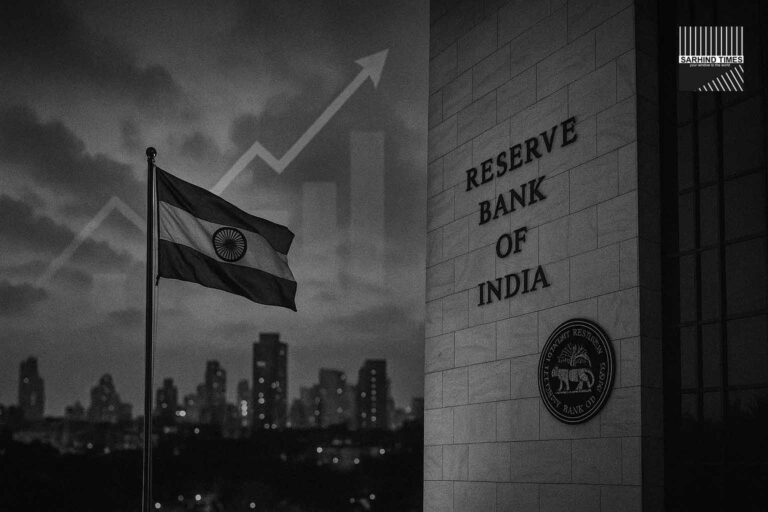The Reserve Bank of India (RBI), in its latest communication, has painted a cautiously optimistic picture for the nation’s economic trajectory in the second half of FY25. Highlighting the resilience of domestic demand, improvements in supply chains, and continued momentum in services, the central bank signaled that conditions are aligning for a firmer pickup in consumption and investment.
This projection comes at a time when India’s stock markets have been wobbling under the influence of global headwinds, including uncertainty in commodity markets, geopolitical tensions, and risk-off investor sentiment. The RBI’s message, therefore, is not merely a statement of numbers—it is a carefully crafted narrative aimed at balancing optimism with prudence.
The RBI’s Growth Outlook
According to the central bank, growth impulses are expected to strengthen as the festive season approaches, aided by three critical factors:
- Easing Supply Bottlenecks: The post-pandemic global trade environment has stabilized, with fewer disruptions in logistics and shipping. Domestic infrastructure improvements have also contributed to smoother supply flows.
- Services Sector Resilience: Travel, hospitality, IT services, and digital platforms continue to demonstrate robust growth. These sectors are critical multipliers for both consumption and employment.
- Rural Demand Recovery: Better monsoon distribution in key agricultural belts is expected to lift rural incomes, stimulating demand for fast-moving consumer goods (FMCG), tractors, two-wheelers, and fertilizers.
While acknowledging global headwinds, the RBI emphasized that India’s domestic ecosystem is showing signs of balance between demand and supply—a crucial precondition for sustained growth.
Stock Market Correction and the RBI’s Signal
The timing of the RBI’s message is noteworthy. Over the past week, Indian indices corrected on the back of global risk aversion and a soft commodity outlook. The Sensex and Nifty both saw declines, with investors pulling back from high valuations.
By issuing a positive assessment, the RBI has sought to stabilize market confidence, reassuring both institutional and retail investors that the macroeconomic foundation remains intact. Economists interpret this as a signal that the central bank does not foresee systemic risks from current corrections, provided inflation remains within manageable bounds.
Inflation, the Wildcard
The RBI has repeatedly stressed that its policy path remains data-dependent, particularly on the inflation front. Food price volatility—driven by pulses, cereals, and edible oils—remains the single biggest risk to consumption stability.
If inflation softens in the next quarter, real incomes will expand, further strengthening purchasing power. However, if global energy prices spike or erratic weather returns, inflationary pressures could temper consumption gains.
Banking and Credit Growth
The RBI acknowledged that credit growth has moderated compared to last year’s surge, when double-digit expansion was driven by retail loans, housing finance, and corporate borrowing. However, bank balance sheets remain strong, with high levels of capitalization and declining non-performing assets.
The central bank views this moderation not as weakness, but as normalization. As demand conditions improve in H2 FY25, credit uptake is expected to accelerate, particularly in housing, infrastructure, and small business financing.
Sectoral Implications
1. Automobiles
With rural demand recovering and urban households enjoying steady incomes, auto sales—especially two-wheelers and entry-level cars—are expected to rebound. This would be a welcome relief after muted sales in early FY25.
2. E-Commerce and Retail
Festive-season sales will likely drive record-breaking volumes. Companies are already reporting robust pre-bookings and logistics preparations.
3. Travel and Hospitality
Domestic tourism has surged, supported by improved infrastructure and higher discretionary spending. H2 FY25 could be the strongest festive travel season in years.
4. Real Estate
Residential demand in Tier-2 and Tier-3 cities is picking up. Developers are optimistic that a stable interest-rate environment will sustain momentum.
5. Agriculture and FMCG
Better rainfall has boosted kharif sowing, leading to improved rural sentiment. FMCG companies are gearing up for higher volumes.
Voices from the Market
- Economist (Mumbai-based): “The RBI’s confidence rests on consumption resilience. If inflation behaves, we could see 6.5–7% growth in H2 FY25.”
- Banking CEO: “Credit demand may have slowed, but balance sheets are cleaner than ever. We are ready to support the next wave of growth.”
- Retail Analyst: “Festive sales will be a litmus test. Early indicators suggest consumers are willing to spend.”
Global Headwinds
Despite domestic optimism, India remains vulnerable to external shocks. Rising US bond yields, fluctuating crude prices, and slowing Chinese growth all pose risks. The RBI’s careful wording reflects this duality—while India is positioned strongly, external turbulence could still upset the trajectory.
Policy Stance Going Forward
The RBI is expected to maintain a neutral policy stance in the upcoming Monetary Policy Committee (MPC) meetings. Analysts predict rate cuts are unlikely until inflation is firmly under control. Instead, liquidity management and targeted support measures may be used to fine-tune growth conditions.
Strategic Importance
The RBI’s message is not just about economics—it is about confidence. By assuring markets of resilience while warning of uncertainties, the central bank is positioning itself as a steady hand guiding India through a volatile global landscape.
Conclusion
The Reserve Bank of India’s latest assessment offers a cautiously hopeful outlook for H2 FY25. With supply bottlenecks easing, rural demand reviving, and services driving momentum, India could witness a renewed surge in consumption.
Yet challenges remain. Inflation risks, global commodity swings, and financial market volatility could still test the resilience of this narrative. Ultimately, India’s economic success in FY25 will depend on maintaining a delicate balance between growth ambitions and macroeconomic stability.
For citizens, the message is clear: the economy is on track, but vigilance is essential. For policymakers, it is a call to sustain reforms and shield the country from external shocks.
#RBI #IndiaEconomy #Growth #Consumption #H2FY25 #Macro #Inflation #Markets #Banking #Policy





















+ There are no comments
Add yours